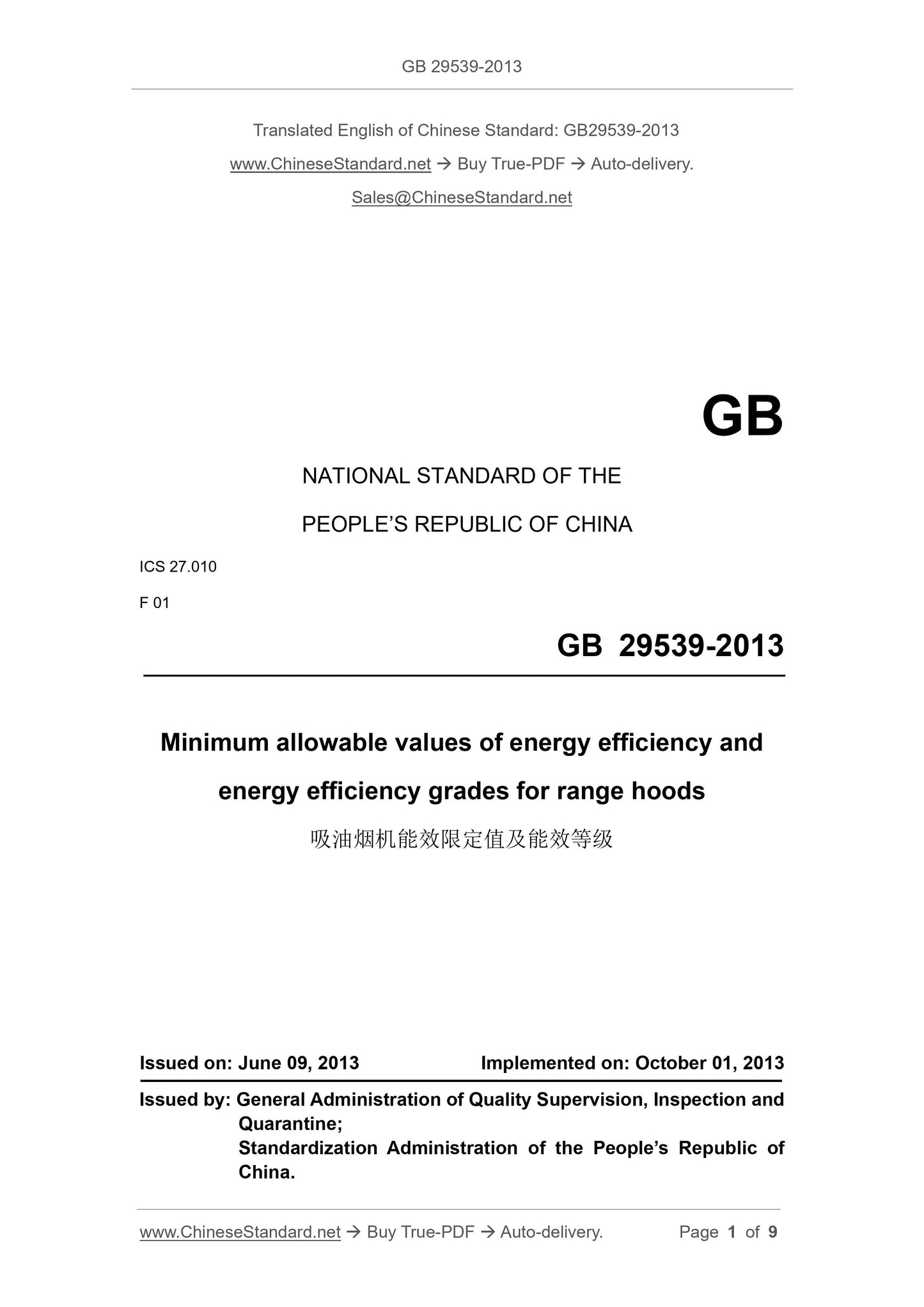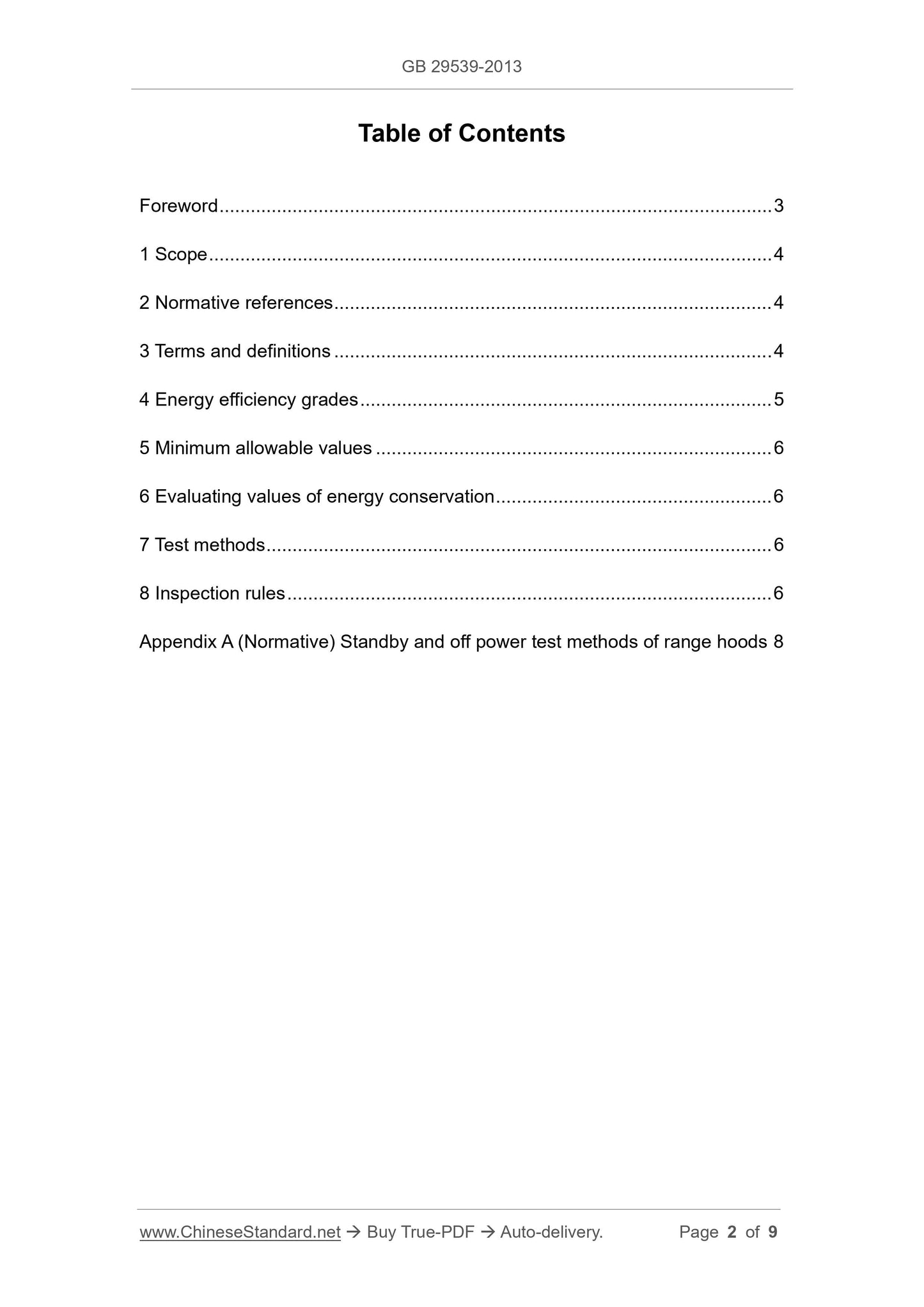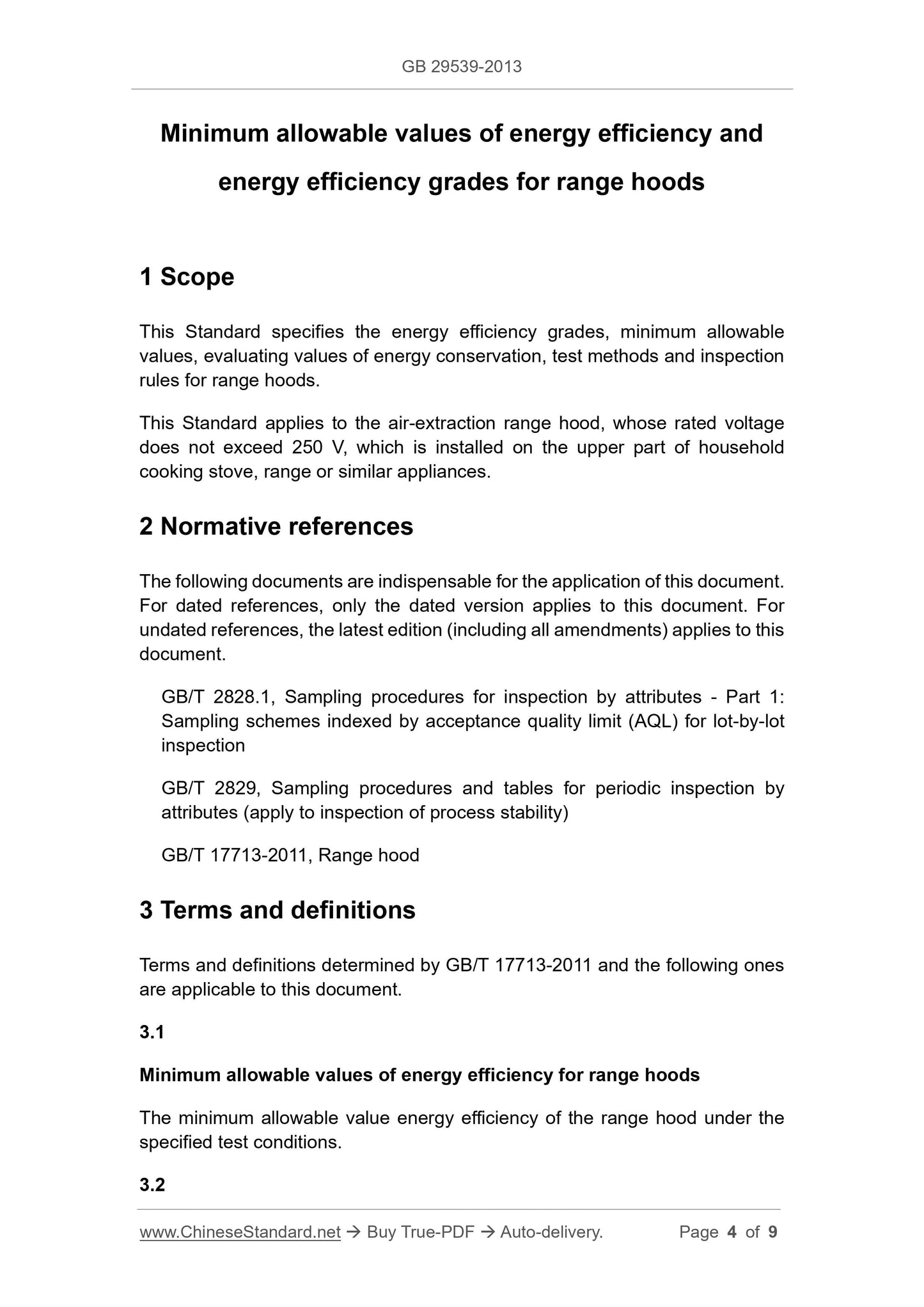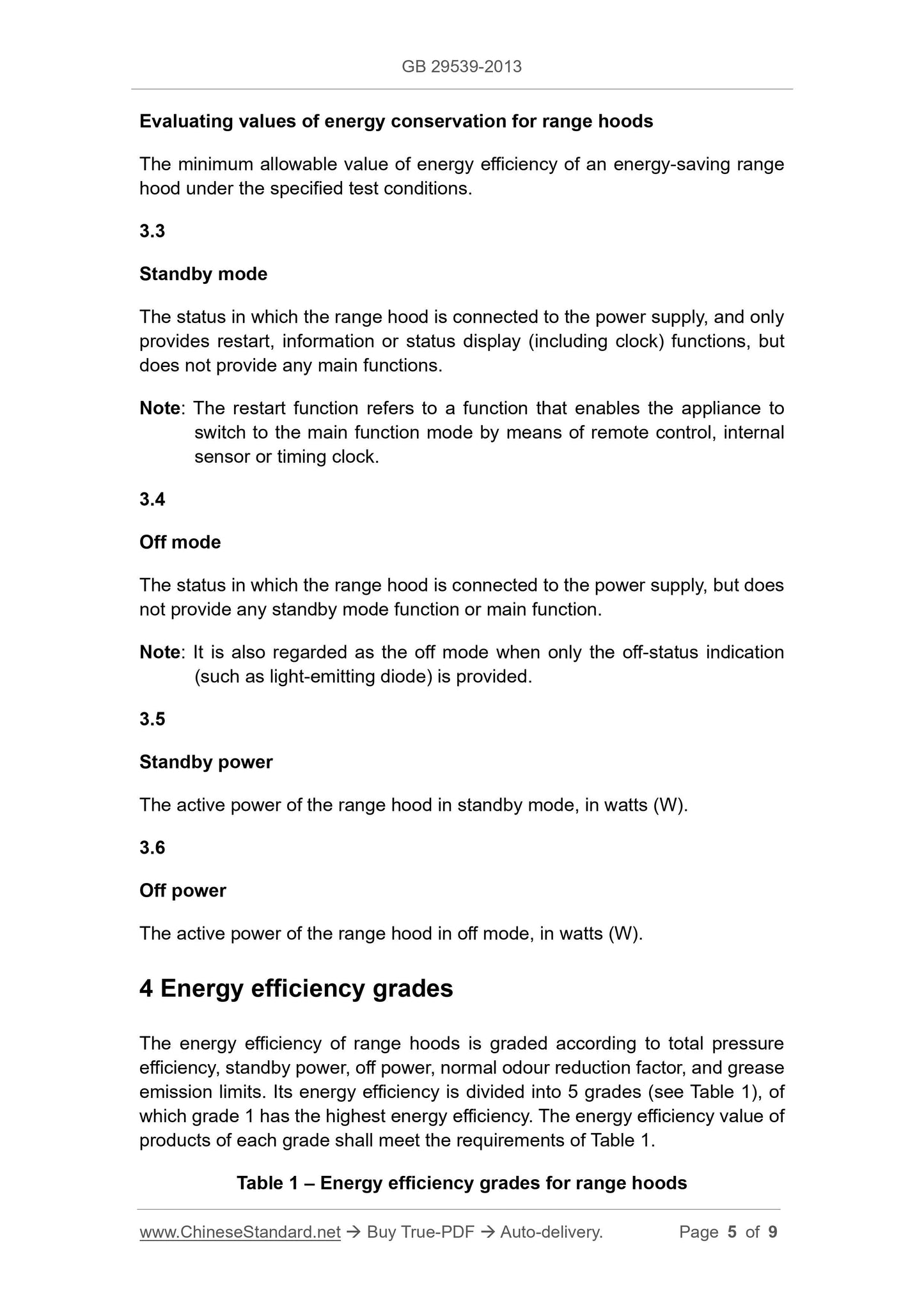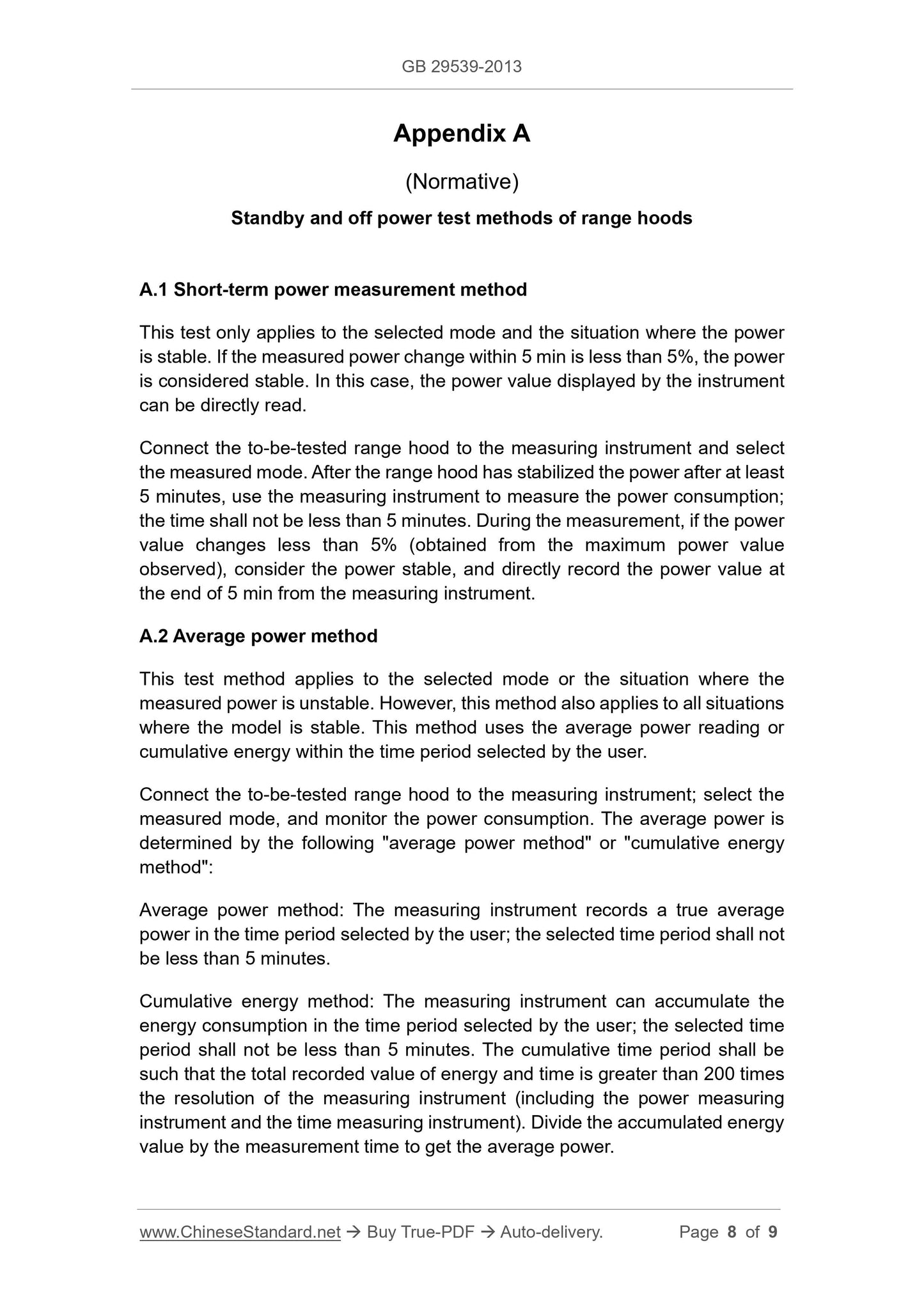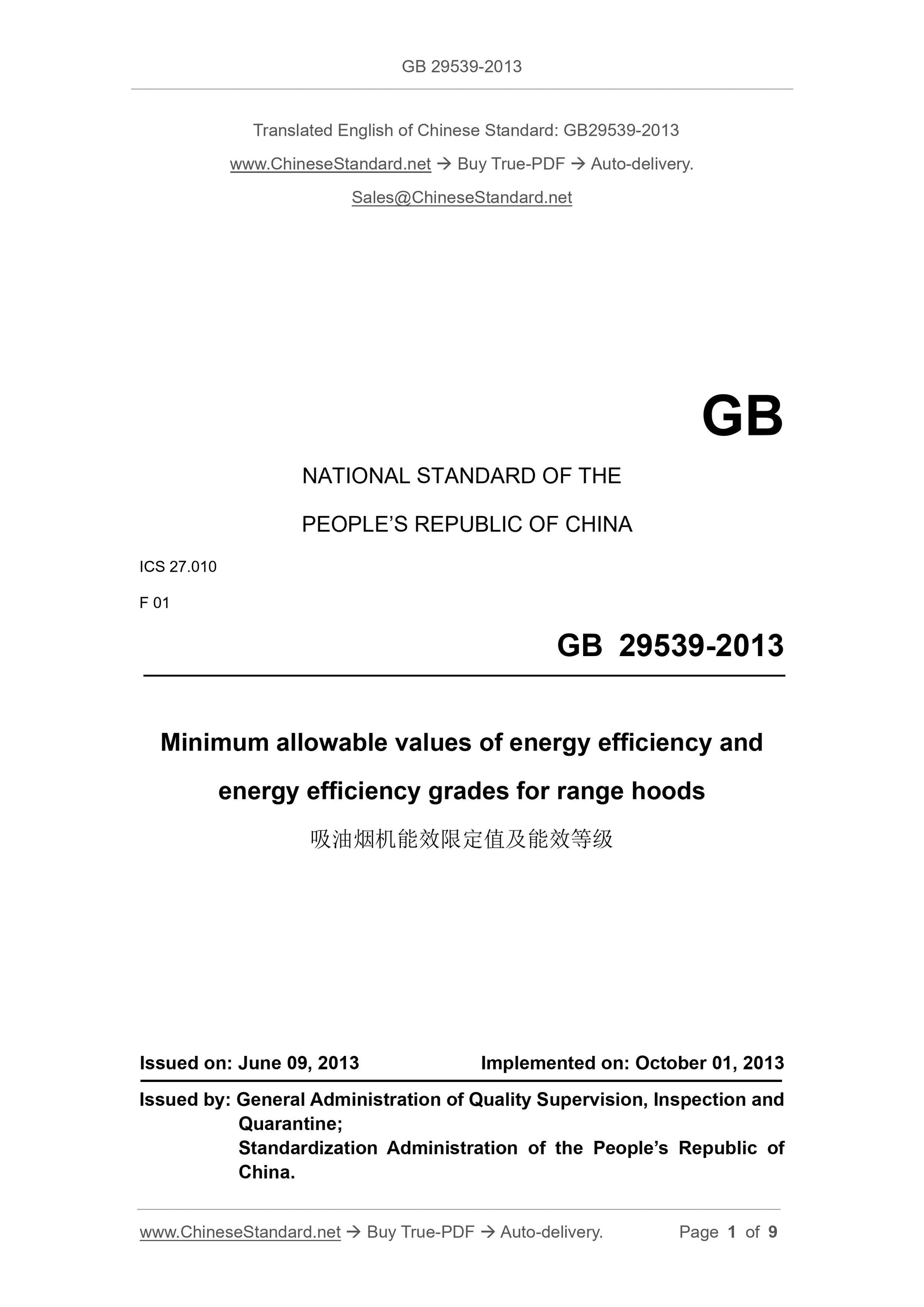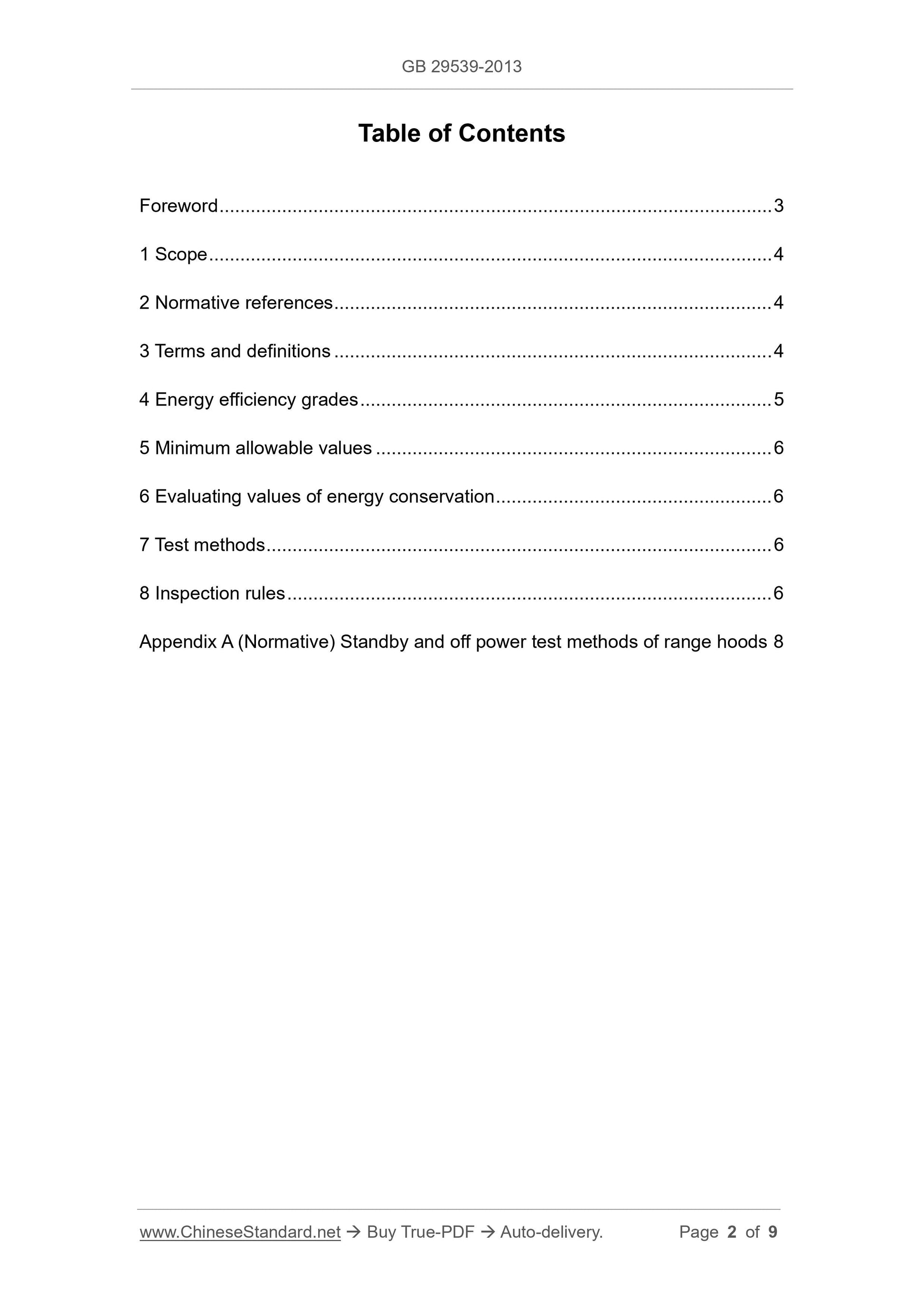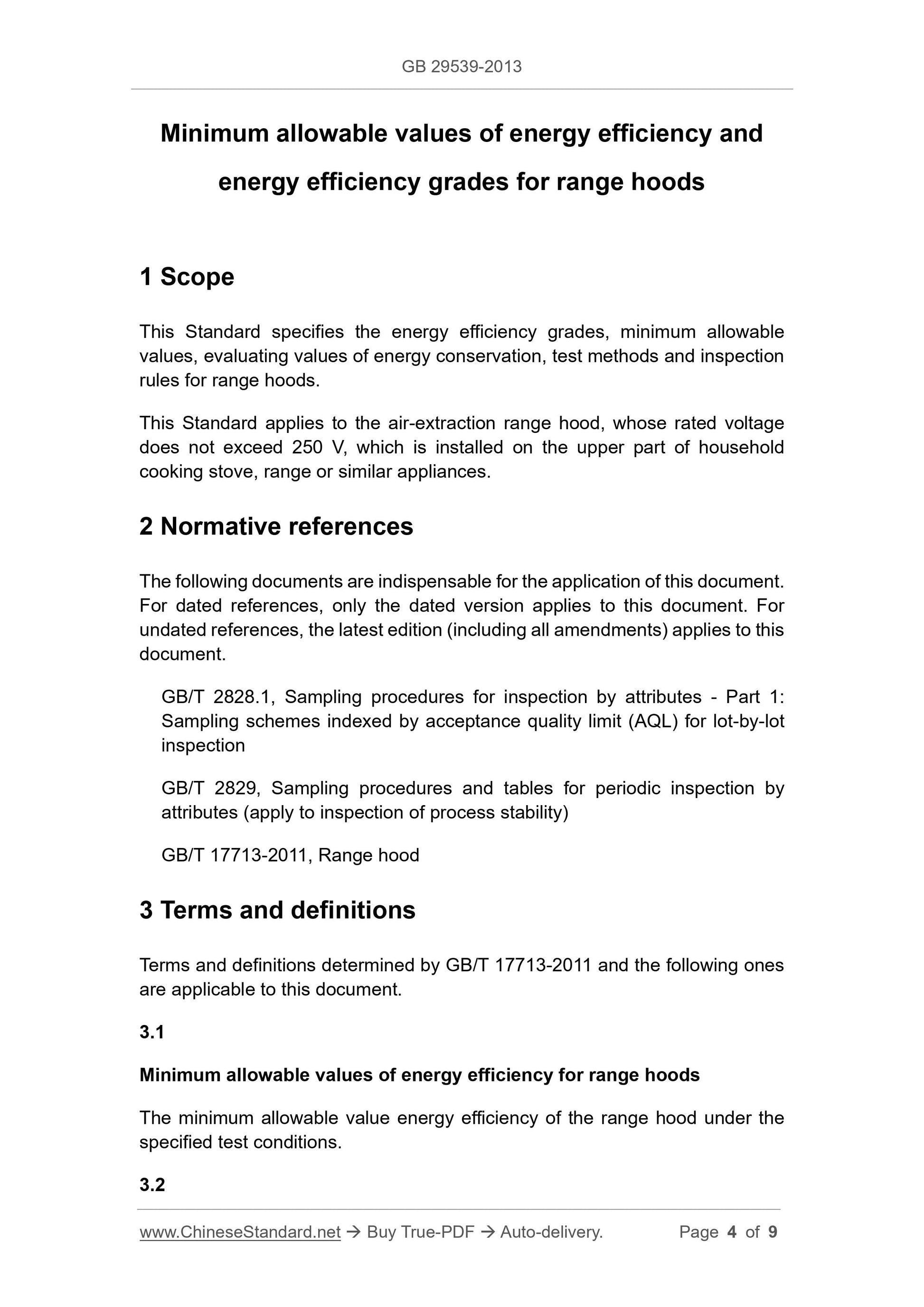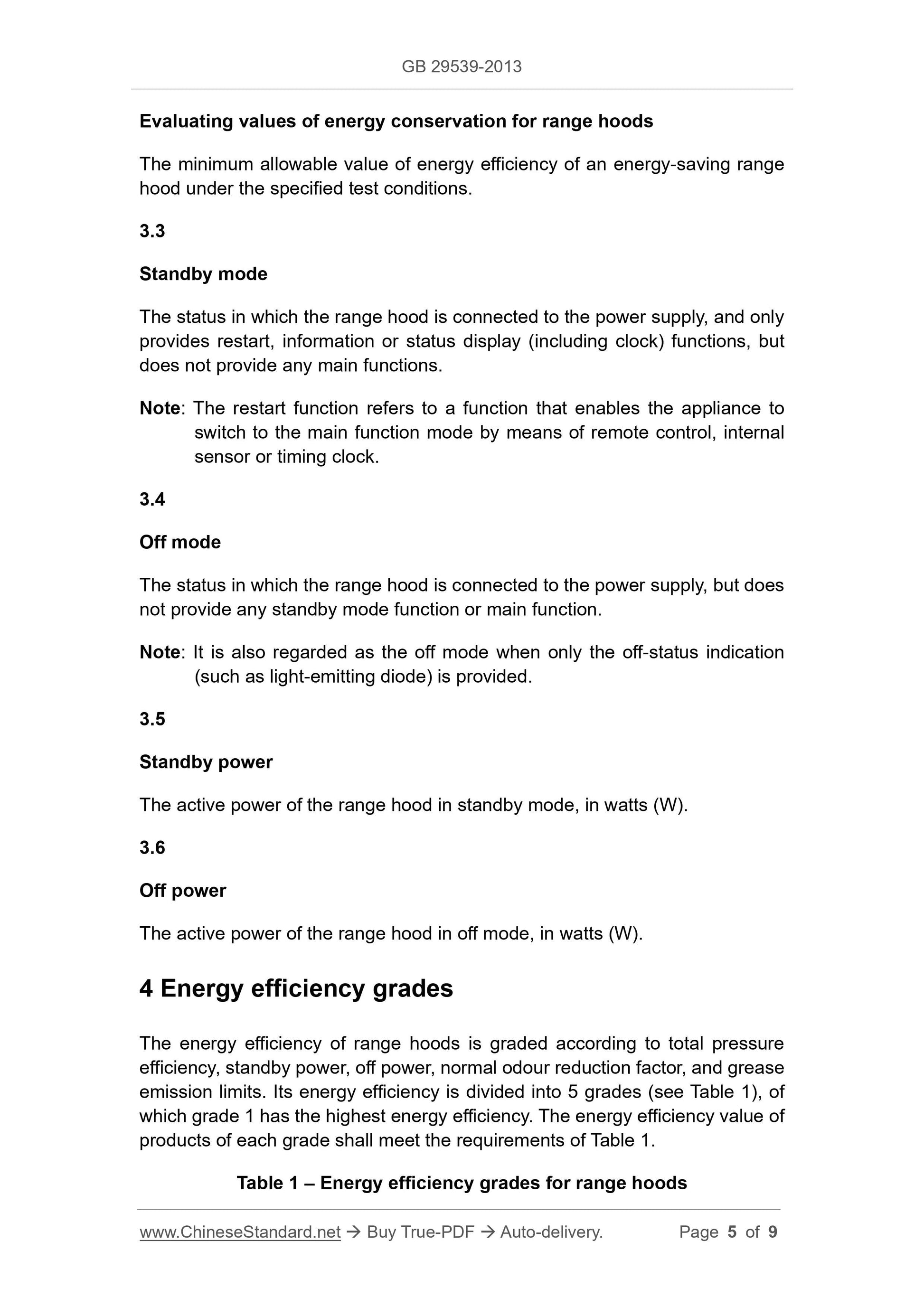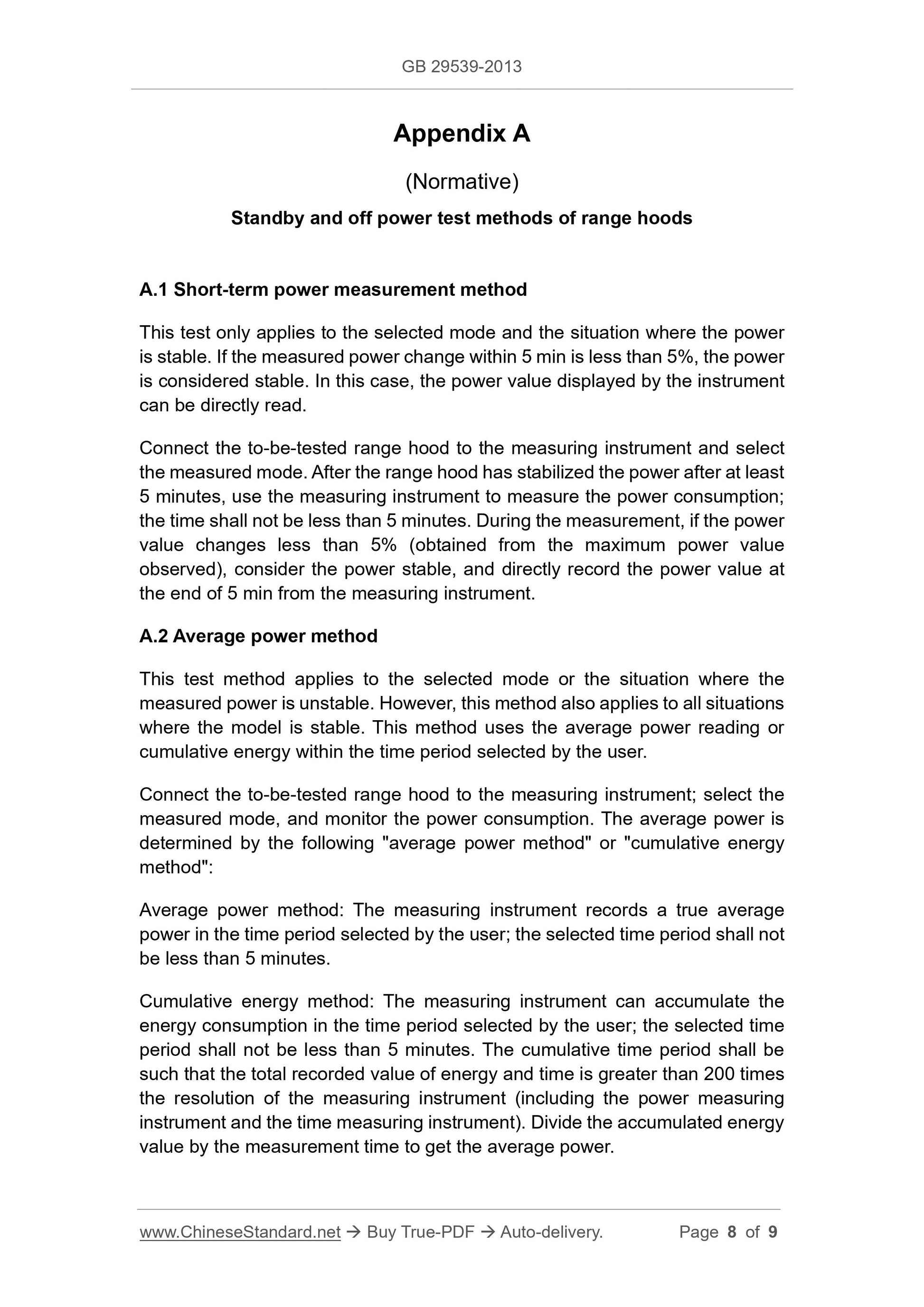1
/
of
5
www.ChineseStandard.us -- Field Test Asia Pte. Ltd.
GB 29539-2013 English PDF
GB 29539-2013 English PDF
Regular price
$125.00
Regular price
Sale price
$125.00
Unit price
/
per
Shipping calculated at checkout.
Couldn't load pickup availability
GB 29539-2013: Minimum allowable values of energy efficiency and energy efficiency grades for range hoods
Delivery: 9 seconds. Download (and Email) true-PDF + Invoice.Get Quotation: Click GB 29539-2013 (Self-service in 1-minute)
Newer / historical versions: GB 29539-2013
Preview True-PDF
Scope
This Standard specifies the energy efficiency grades, minimum allowablevalues, evaluating values of energy conservation, test methods and inspection
rules for range hoods.
This Standard applies to the air-extraction range hood, whose rated voltage
does not exceed 250 V, which is installed on the upper part of household
cooking stove, range or similar appliances.
Basic Data
| Standard ID | GB 29539-2013 (GB29539-2013) |
| Description (Translated English) | Minimum allowable values of energy efficiency and energy efficiency grades for range hoods |
| Sector / Industry | National Standard |
| Classification of Chinese Standard | F01 |
| Classification of International Standard | 27.010 |
| Word Count Estimation | 7,737 |
| Quoted Standard | GB/T 2828.1; GB/T 2829; GB/T 17713-2011 |
| Regulation (derived from) | National Standards Bulletin 2013 No. 9 |
| Issuing agency(ies) | General Administration of Quality Supervision, Inspection and Quarantine of the People's Republic of China, Standardization Administration of the People's Republic of China |
| Summary | This standard specifies the hood of the energy efficiency rating, energy efficiency limit, energy conservation evaluation values ??, test methods and inspection rules. This standard is applicable for installation in household cooking stoves, stoves, or si |
Share
